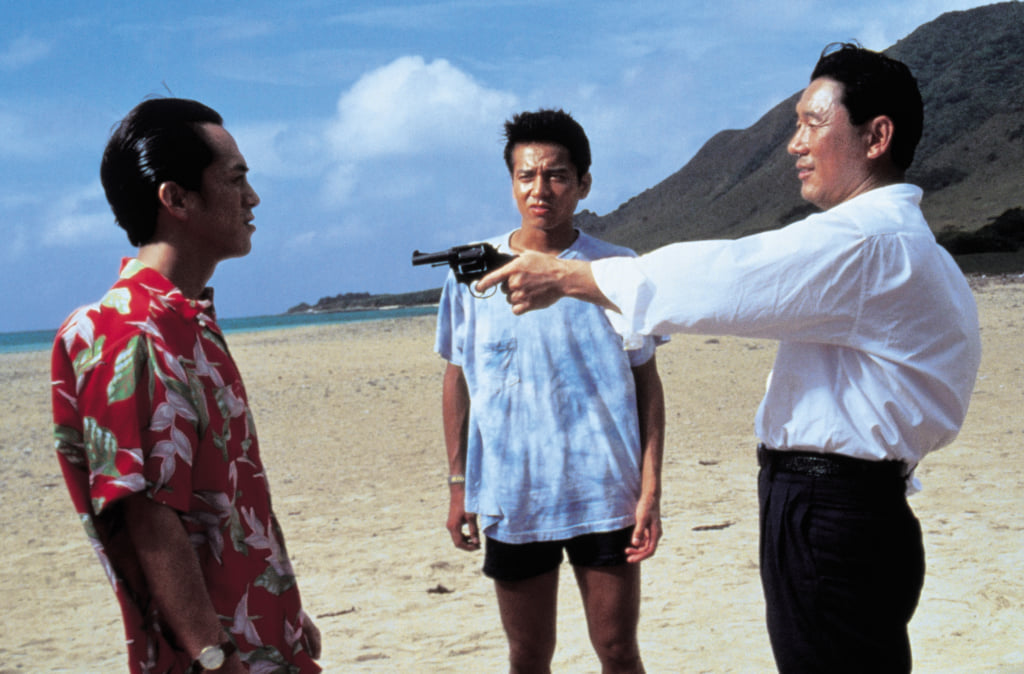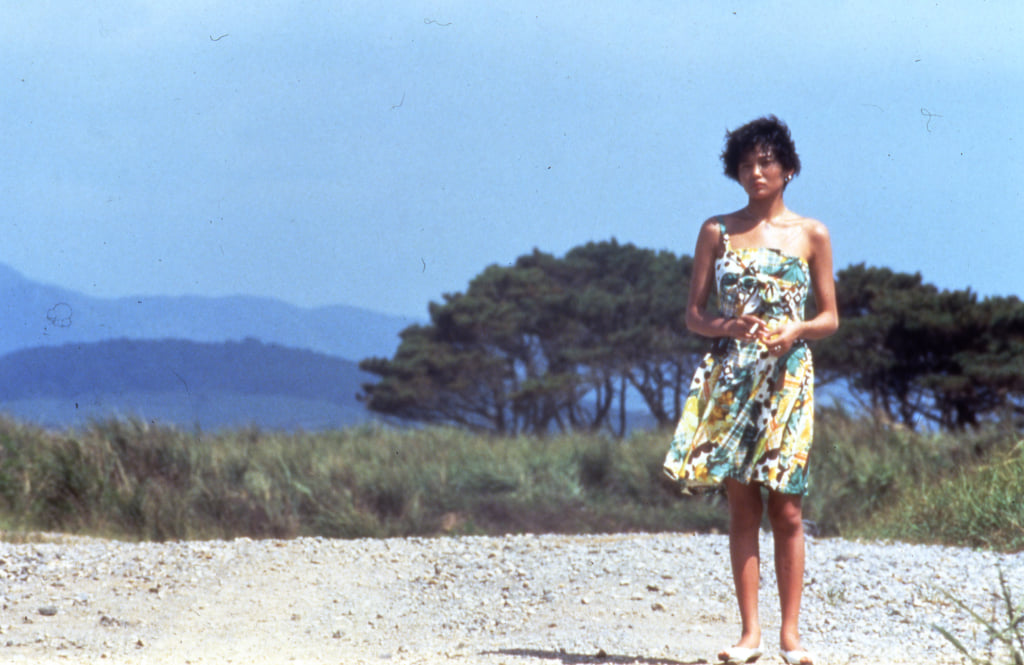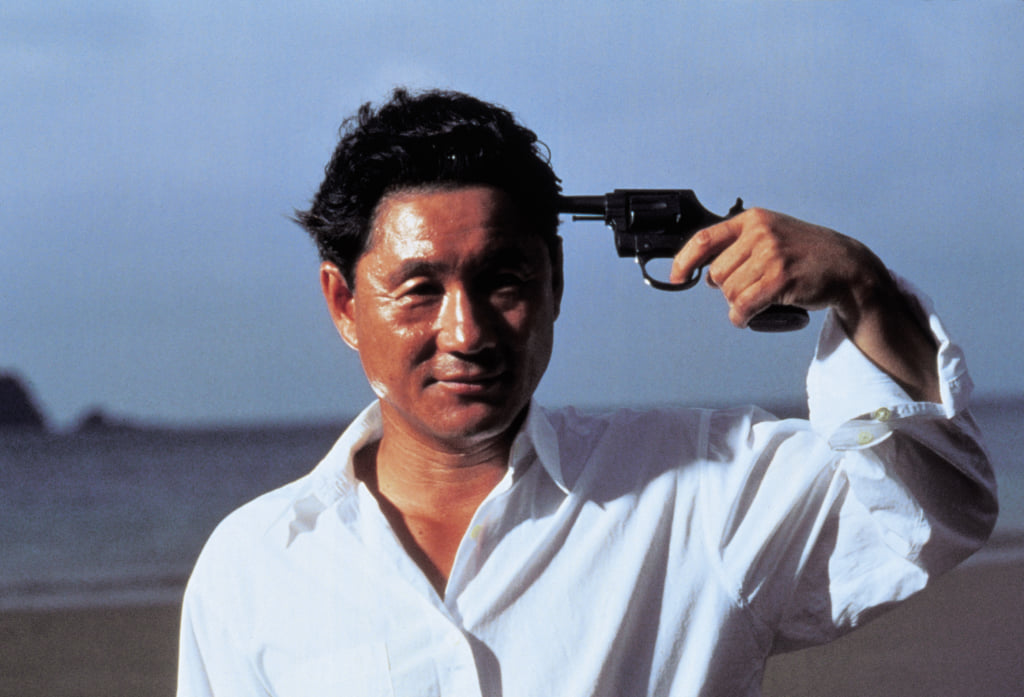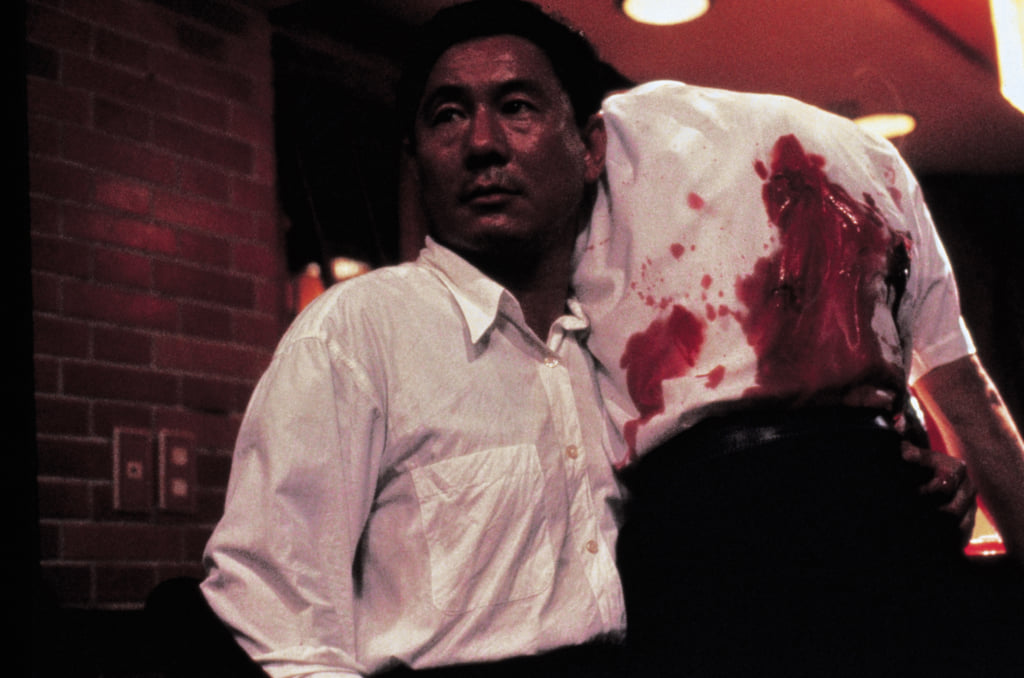‘Sonatine’, Yakuza by the Seaside
In this film, Takeshi Kitano takes mafia members out of their Tokyo gambling dens and transports them to the fine sandy beaches of Okinawa.

© 1993 Shochiku Co., Ltd – All rights reserved
Although Sonatine is a yakuza film, it defies the conventions of the genre. Takeshi Kitano offers no shots of gambling houses or dingy back rooms, nor of streets lit up by neon lights at night. In this film, released in 1993, the gangsters swap their impeccably ironed suits for Hawaiian shirts and operate in an environment where nature reigns supreme: the tropical islands of Okinawa.
Takeshi Kitano is a Japanese actor and director, also known by the name ‘Beat Takeshi.’ Born in Tokyo in 1947, he started out as an actor, notably appearing in Furyo, a film by Nagisa Oshima. As a director, Takeshi Kitano specialises in yakuza films, in which he shoots long-sequence shots that contrast with his liking for action shots, rapidly cut as soon as the scene ends. Sonatine was his fourth film, and the first to be distributed in France, where it was included in the official selection at the Cannes Film Festival.
Sumo, kabuki, and Hawaiian shirts
The narrative can be summarised as follows: Aniki Murakawa, played by Kitano himself, is sent by his clan leader, along with a few men, to the islands of Okinawa to restore order between two rival gangs. Once they arrive, however, Murakawa and his associates realise that this is an attempt to have them removed. Murakawa thus decides to go with his gang to take up residence in a house by the seaside. Shootouts and hand-to-hand combat are replaced by other activities, as the viewer watches the yakuza dedicate their time to hand-crafting fireworks, sumo wrestling, and kabuki-theatre performances. Sonatine brings to light the psyche, emotions, and dreams of the yakuza, as opposed to the well-oiled and stifling organisation of the codes of the Japanese mafia.
Although Sonatine was not met with success on its release in Japan, this was the feature film that allowed Takeshi Kitano’s work to cross Japanese borders, making a name for him in the West.
Sonatine (1993), a film by Takeshi Kitano, is distributed by Wild Side.

© 1993 Shochiku Co., Ltd – All rights reserved

© 1993 Shochiku Co., Ltd – All rights reserved

© 1993 Shochiku Co., Ltd – All rights reserved

© 1993 Shochiku Co., Ltd – All rights reserved

© 1993 Shochiku Co., Ltd – All rights reserved

© 1993 Shochiku Co., Ltd – All rights reserved
TRENDING
-
A House from the Taisho Era Reveals Its Secrets
While visiting an abandoned building, Hamish Campbell discovered photographs the owner had taken of the place in the 1920s.

-
The Taboo-Breaking Erotica of Toshio Saeki
The master of the 1970s Japanese avant-garde reimagined his most iconic artworks for a limited box set with silkscreen artist Fumie Taniyama.

-
With Meisa Fujishiro, Tokyo's Nudes Stand Tall
In the series 'Sketches of Tokyo', the photographer revisits the genre by bringing it face to face with the capital's architecture.

-
Masahisa Fukase's Family Portraits
In his series ‘Family’, the photographer compiles surprising photos in which he questions death, the inescapable.

-
Hajime Sorayama's Futuristic Eroticism
The illustrator is the pioneer for a form of hyperrealism that combines sensuality and technology and depicts sexualised robots.





